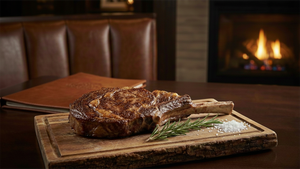International Gas Union President Joe Kang: Why Natural Gas is a “Hand-in-Hand” Partner to Renewables, the Future of LNG is “Very Bright” and Why There is “No Yellow Brick Road in Energy Issues”
Kang speaks with IHS Markit Vice Chairman Daniel Yergin for a new edition of CERAWeek Conversations – available at https://ondemand.ceraweek.com/cwc
In the latest episode of the new CERAWeek Conversations series for 2021, Joe Kang, president of the International Gas Union (IGU), whose members represent more than 95% of the global gas market, discusses why “gas supply is a catalyst for the energy transition;” how LNG’s flexibility allowed for “tremendous performance in this dire situation” during the pandemic-induced market shocks of 2020; and looking ahead to the 2022 World Gas Congress being “a living laboratory for testing new technologies.”
In a conversation with Daniel Yergin, vice chairman, IHS Markit (NYSE: INFO), Kang talks about how energy transition is “inherently, characteristically diverse and complex.” Reacting to the IEA’s May 2021 report on pathways to net-zero emissions by 2050, Kang says the IEA scenario—which envisions the global power mix being 90% renewables and 10% nuclear—“is too ambitious and impractical.”
“Given that the present global energy mix is 30% oil, 27% coal, 26% natural gas and less than 10% renewable, the energy transition is a time-consuming, expensive, step-by-step process. How can you change the whole landscape in less than 30 years?,” he says.
Speaking of the varying challenges that developed, developing and underdeveloped countries face in meeting net-zero goals, Kang says that “different patients with different diseases should have a different prescription. We don’t have a panacea in the energy issue. There is no yellow brick road in energy issues.”
The complete video is available at: https://ondemand.ceraweek.com/cwc
Podcast version available: CERAWeek Conversations is also available via audio podcast on Apple Podcasts, Google Podcasts, Soundcloud, Spotify and Stitcher.
Selected excerpts:
Interview Recorded Tuesday, June 22, 2021
(Edited slightly for brevity only)
-
On global LNG demand during the pandemic years and drivers of future growth:
“I’m really surprised to see the performance in 2020. Everyone predicted that the LNG [market] would be down. But we saw the 12th year of continuous growth. 2020 was no exception. We had a tremendous performance in this dire situation.”
“LNG has a great advantage for its flexibility and agility. In 2020 [during] the pandemic we actually made progress in terms of consumption especially as oil and coal consumption were down almost 30% from 2019. LNG is different because we did have a huge drop right after the pandemic, but this winter there was a real spike in demand. Thanks to LNG we can manage the huge ups and downs of energy consumption.”
“Asia is the primary growth market for LNG thanks to China on the demand side. But on the supply side, Australia and the U.S. played a key role in meeting demand from Asia. Now it is well balanced. The future outlook of LNG I see as very bright. LNG and piped natural gas are 30% of world gas production. Only 30% is traded: 10% is LNG, 20% is through piped natural gas. I see the increase in LNG outpacing piped natural gas.”
-
On the unique role of gas in the decarbonization agenda:
“Gas has four core attributes: Energy supply that is accessible, secure, constant and affordable. Gas supply is a catalyst for the energy transition. We’ve proved those attributes of natural gas. In the future we are always ‘friends’ with renewables…You can see the trajectory in the global energy mix. Two energy sources are increasing. One is renewables, the other is natural gas. Renewables has a lack of flexibility, intermittency and seasonality. Gas does not have that. We can complement the shortage of renewables. That’s why we call gas a hand-in-hand partner to renewables.”
-
On the IEA’s May 2021 report on decarbonization roadmaps to 2050:
“I believe gas will continue to play [a partnering role to renewables] but the IEA’s roadmap to 2050 didn’t say that. They didn’t recognize how gas contributes to the energy transition. We value the IGU stance and we are really honored it is an analytical forecast of the energy mix. But we differ [with the IEA] on the pathway of how to move forward to meet climate goals.”
“The IEA said that by 2050 [the global power mix would be] 90% of renewables, 10% nuclear. Also, 90% of renewable electricity would be shared between wind power and solar PV. Given that the present global energy mix is 30% oil, 27% coal, 26% natural gas and less than 10% renewable, the energy transition is a time-consuming, expensive, step-by-step process. How can you change the whole landscape in less than 30 years? That scenario is too ambitious and impractical.”
“We share the values of the IEA. But to meet net zero emissions, maybe this can be done in some parts of the world. Europe can maintain and manage that target. But in some developing or underdeveloped Asian countries, they see this as global policy centralization. Underdeveloped or developing countries say this is a second wave of imperialism. That’s not the view of the IGU, it’s the view of developing and underdeveloped countries, because we do have IGU charter members from Asia.”
“The energy issue is inherently, characteristically diverse and complex. Different patients with different diseases should have a different prescription. We don’t have a panacea in the energy issue. There is no yellow brick road in energy issues.”
-
On the outlook for hydrogen:
“Renewables have a very bright future, including hydrogen. On the world scene, new technologies, new things are very [welcome]. We have to analyze the property of hydrogen in a very extensive and accurate way. Hydrogen is, for sure, for the future. But hydrogen is a secondary energy, not like natural gas. Secondary energy is converted from primary energy, or electrolysis from water with a huge injection of electricity. According to the IEA’s roadmap scenario, half of the technology for hydrogen in the energy transition has not yet materialized.”
“Hydrogen is a new technology. But we haven’t looked at what are the manufacturing costs in terms of capex, opex and what infrastructure we need. What are the safety issues that we’re going to face in the future? The IEA said only one side of the plan, they only talked about the goals to reach the climate challenge. But they didn’t list the costs involved. I imagine this is a trillion dollars that we have to pay to enter the hydrogen era. Who is going to pay for it?”
-
On the agenda for the World Gas Conference in May 2022 in Daegu, Korea:
“In Korea, we are very successful to [potentially] reach herd immunity by the first part of November. The World Gas Conference is classified as the ‘Gas Olympics.’ The World Gas Conference is not only natural gas. It’s all kind of gases and also infrastructure and the technology related to ship building and the auto industry. Korea is the right place to provide the platform to discuss all issues relevant to the gas industry.”
“Maritime organizations say that all of the new ships will be driven by LNG. Most of the ship orders that have arrived at Korean companies are LNG-driven vessels. Also, Hyundai announced they are going to manufacture cars driven by hydrogen. The World Gas Conference is a living laboratory for testing new technologies and new things in the coming decades.”
Watch the complete video at: https://ondemand.ceraweek.com/cwc
New CERAWeek Conversations segments also include:
- Cybersecurity: Protecting energy Infrastructure – Leo Simonovich, vice president and global head, industrial cyber and digital security, Siemens; Merritt Baer, principal, Office of the CISO, Amazon Web Services; Herb Lin, senior research scholar, Center for International Security and Cooperation, Stanford University. Interviewed by Vinod Raghothamarao, director, IHS Markit
- Leadership Dialogue with Bob Dudley – OGCI chairman interviewed by Daniel Yergin, vice chairman, IHS Markit
- Geothermal: A New Arrival? – Lees Rodionov, director, sustainability, Schlumberger; Timothy Latimer, CEO, Fervo Energy; Jamie Beard, executive director, The Geothermal Entrepreneurship Organization. Interviewed by Carolyn Seto, research and analysis director, cost and technology, IHS Markit
About CERAWeek Conversations:
CERAWeek Conversations features original interviews and discussion with energy industry leaders, government officials and policymakers, leaders from the technology, financial and industrial communities—and energy technology innovators.
The series is produced by the team responsible for the world’s preeminent energy conference, CERAWeek by IHS Markit.
The complete episode library is available at https://ondemand.ceraweek.com/cwc.
CERAWeek Conversations is also available via audio podcast on Apple Podcasts, Google Podcasts, Soundcloud, Spotify and Stitcher.
About IHS Markit (www.ihsmarkit.com)
IHS Markit (NYSE: INFO) is a world leader in critical information, analytics and solutions for the major industries and markets that drive economies worldwide. The company delivers next-generation information, analytics and solutions to customers in business, finance and government, improving their operational efficiency and providing deep insights that lead to well-informed, confident decisions. IHS Markit has more than 50,000 business and government customers, including 80 percent of the Fortune Global 500 and the world’s leading financial institutions. Headquartered in London, IHS Markit is committed to sustainable, profitable growth.
IHS Markit is a registered trademark of IHS Markit Ltd. and/or its affiliates. All other company and product names may be trademarks of their respective owners © 2021 IHS Markit Ltd. All rights reserved.
View source version on businesswire.com: https://www.businesswire.com/news/home/20210701005643/en/
Contacts
Jeff Marn
IHS Markit
+1 202 463 8213
Jeff.marn@ihsmarkit.com
Press Team
+1 303 858 6417
press@ihsmarkit.com
More News
View More




Recent Quotes
View More
Quotes delayed at least 20 minutes.
By accessing this page, you agree to the Privacy Policy and Terms Of Service.